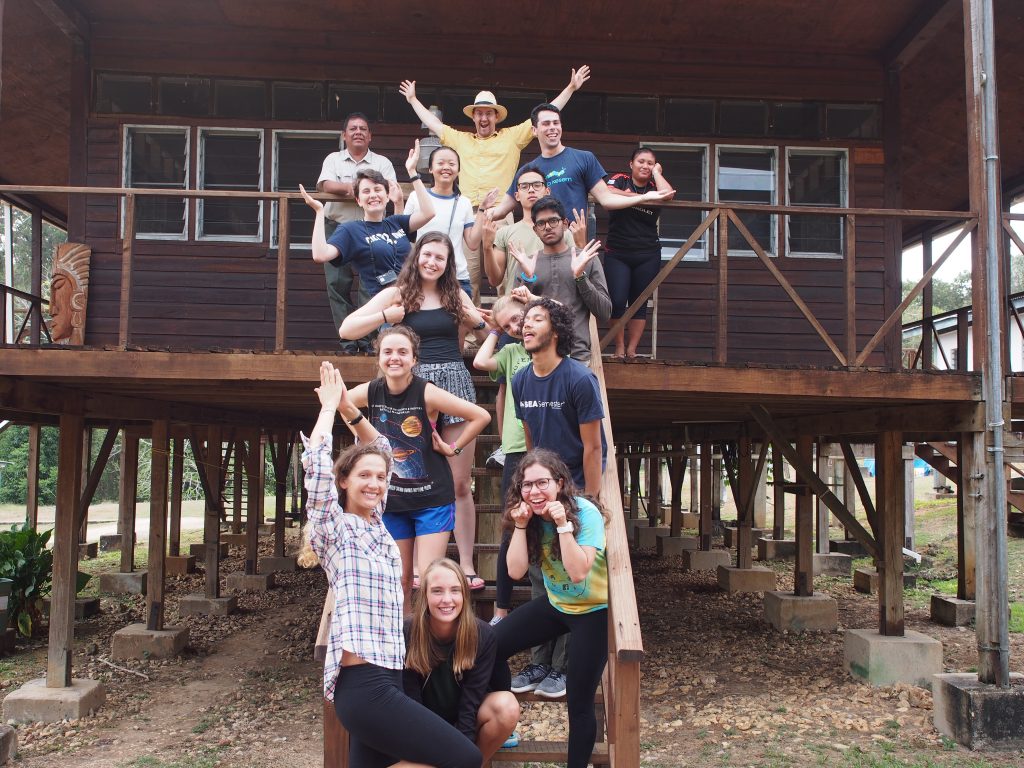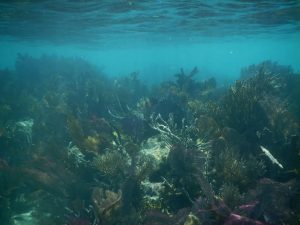The tropical rainforest and the coral reef are two of the most biologically diverse ecosystems on earth. What similarities exist between these two ecosystems, and how might these similarities relate to high levels of biological diversity? What personal observations have you made about the similarities and differences between these two ecosystems?
We discussed in a lecture once that one of the most interesting similarities between coral reefs and tropical rainforests is that they’re both nutrient-poor, yet they support so many different species. This is all a guess, but I think that might be because low levels of nutrients are a limiting factor that prevents certain species from taking over- for example, when excess nutrients are put into coral reefs, algae tends to dominate and biodiversity decreases. Maybe low nutrient levels give slow-growing organisms like coral and large fauna a chance to mature without too much competition from faster-growing organisms like algae and insects?
Additionally, both coral reefs and tropical rainforests encompass many different physical habitats. Animals in reefs may live in the open water, on sponges, corals, or algae, or under rubble and rock. Likewise, tropical rainforests are stratified into 4 layers, the emergent, canopy, understory and forest floor. These are all different niches that a variety of species can fill.
One difference I noticed is that animals in the rainforest were more fearful of humans than those in the reef. It might have just me? But I was really surprised that while snorkeling around, I could basically swim into a school of fish and they wouldn’t be too alarmed, they would just swim a couple of feet away. Some cleaner fish even came ad nibbled on my hands and flippers! But in the rainforest, it was impossible to see any large fauna like big cats, herbivores, and birds up close. I wonder if that’s because generally large fauna in the rainforest are more intelligent than animals in the reef? I think the most intelligent animal in the reef would be an octopus, and we didn’t see any of those up close (except Squishy), so that would make sense.
How did the course compare with your expectations? What were your favorite—and least favorite—parts of the course? Describe three things that you learned in the course that you consider to be the most important or surprising (i.e., what did you learn that you will remember five years from now)?
I expected, for some reason, much less snorkeling! I think because I was nervous about going into the ocean, I must have blissfully ignored that half of the course going in. But I was happy to have gained experience and confidence in the water over the week we spent at Glover’s; now I’m pretty sure I can put on my dive gear in my sleep. Otherwise, I came with a very open mind, knowing that my idea of the tropics mostly comes from movies and books.
One of my favorite parts of the course was definitely the downtime I had to just explore and look for animals, particularly at Las Cuevas. I loved being able to look down, dig through the leaf litter and find a millipede or something that I’d only seen before at the science museum. Another of my favorite things about this course are the people I was able to meet. It was amazing to hear Scott, Adrienne and Therese talk about their research- I’ve been thinking about doing some kind of ecology research since I was a kid, and I could finally meet a real live ecologist and hear how passionate they are about their work. Also, I loved getting to meet all of the people who helped us during our stay: Javi, Adolfo, Kenneth, Tiffany and Apache to name a few!
My least favorite part of the course was probably the lack of sleep and hygiene. I think that may be all part of doing field research- but I think I much prefer the city life!
With that said, I think after this course I’ve learned that I really do want to stay and work in the city. I’m very passionate about educating the public about the environment and preserving Texas’s native flora/fauna, and I think that working in a foreign country, kind of disconnected from the community isn’t for me. So, being able to experience tropical field research firsthand has somewhat clarified my career goals. (Maybe I’ll create Houston’s first moth zoo?)
Secondly, and though this seems kind of odd, I feel like I’ve learned the power of time management… it was incredible the amount of things we achieved every day in Belize. That was definitely a sharp contrast to my usual summer routine of lazing around on the couch, and I really enjoyed it! So I’m planning to do a lot more with my summer than I usually do, like taking some classes, exploring the city, reading in Fondy (I know how to have fun okay…), trying to sell my drawings??
And finally, one of the biggest things that will stick with me are the people I’ve gotten to know on this trip. I never expected to become part of such a great group of people and I’m excited to poke all of you for years to come!




